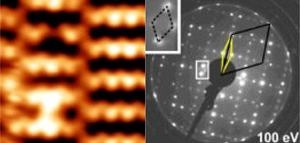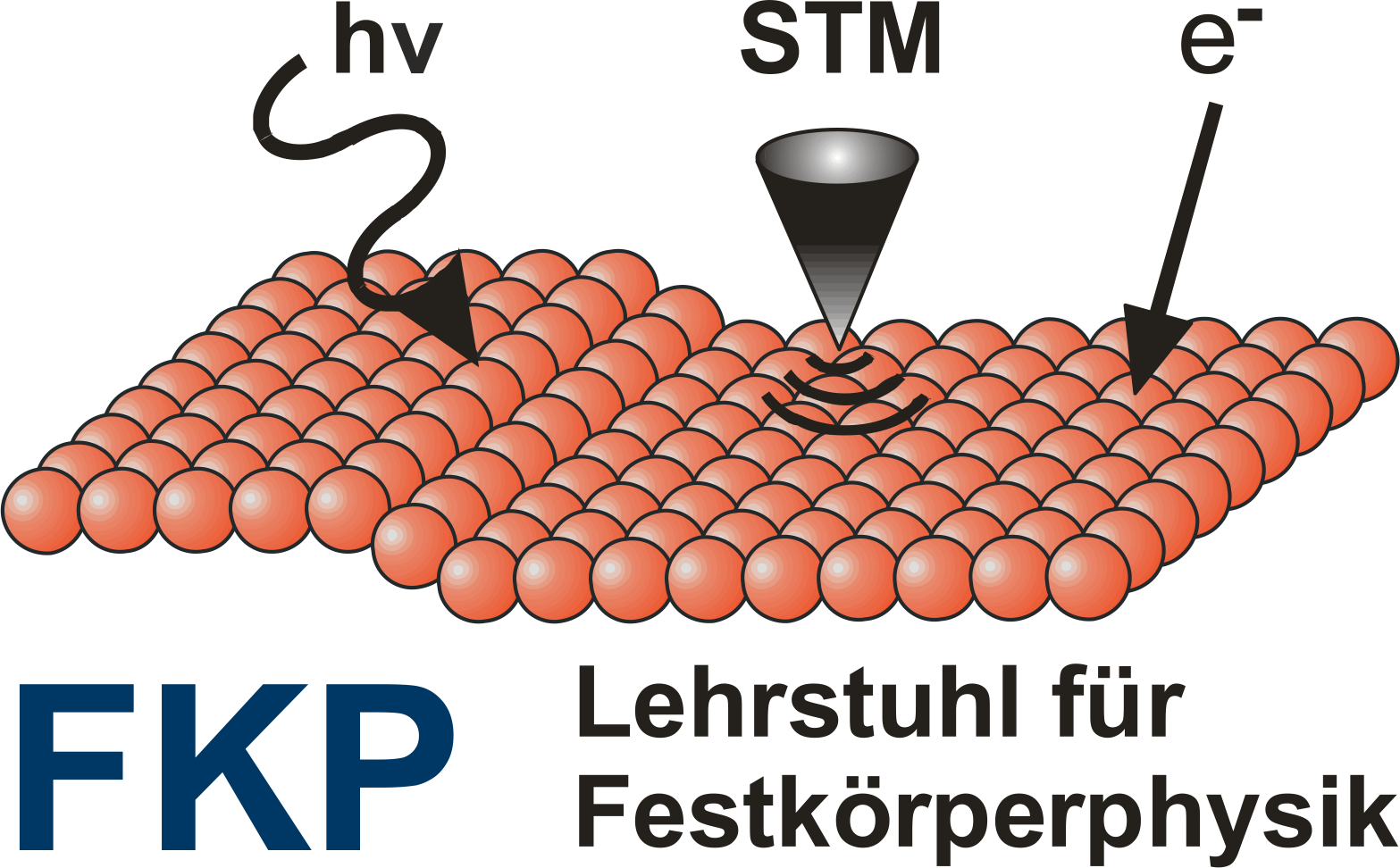Metal oxide surfaces, thin films, and nanostructures

Since many oxides are insulators or large-gap semiconducturs they are not accessible to surface science methods that employ electrons as probes. We therefore prepare oxide films that are only a few monolayers thick on metal substrates where electrons can tunnel through the oxide. In such systems the morphology and resulting atomic structure of the oxide is determined by the interaction at the metal-oxide interface and by growth parameters. We employ LEED, STM, and DFT to unravel the influence of such parameters on the atomic structure of the films.
We will extend this work towards the preparation and investigation of well defined interfaces between oxides that may exhibit new electronic, magnetic or even superconducting properties.
Puplications
- Tröppner, Carsten, et al. "Incommensurate Moire overlayer with strong local binding: CoO(111) bilayer on Ir(100)." Physical Review B 86.23 (2012): 1-9.
- Ferstl, Pascal, et al. "Monatomic Co, CoO2, and CoO3 nanowires on Ir(100) and Pt(100) surfaces: Formation, structure, and energetics." Physical Review B 96.8 (2017).
- Ferstl, Pascal, et al. "Self-Organized Growth, Structure, and Magnetism of Monatomic Transition-Metal Oxide Chains." Physical Review Letters 117.4 (2016).
Contact
- Dr. Lutz Hammer, Akad. Dir. (Website: https://www.fkp.physik.nat.fau.eu/)
- Tilman Kißlinger
- Prof. Dr. M. Alexander Schneider (Website: https://www.fkp.physik.nat.fau.eu/person/m-alexander-schneider/)
The idea of this project is to identify the role of metal metal-oxide interfaces in catalysing basic oxidation reactions (CO to CO2, H2 to H2O, hydrocarbons to H2O and CO(2)). The approachuses LEED, STM, and TDS in ultra-high vacuum (UHV) and aims at clarifying adsorbate adsorption sites, reduced oxide sites, intermediate reoxidation configurations etc.) occurring prior to or during the chemical reactions. The insights from these experiments might become helpful for the design of catalysts that remove dangerous substances from the (exhaust) air or allow to produce climate-neutral fuels.
Contact
- Dr. Lutz Hammer, Akad. Dir. (Website: https://www.fkp.physik.nat.fau.eu/)
- Tilman Kißlinger
- Prof. Dr. M. Alexander Schneider (Website: https://www.fkp.physik.nat.fau.eu/person/m-alexander-schneider/)
Puplications
- Faisal, Firas, et al. "Atomically-defined model catalysts in ultrahigh vacuum and in liquid electrolytes: particle size-dependent CO adsorption on Pt nanoparticles on ordered Co3O4(111) films." Physical Chemistry Chemical Physics 20.36 (2018): 23702-23716.
- Faisal, Firas, et al. "Electrifying model catalysts for understanding electrocatalytic reactions in liquid electrolytes." Nature Materials 17.7 (2018): 592-+.
- Mehl, Sascha, et al. "Thermal evolution of cobalt deposits on Co3O4(111): Atomically dispersed cobalt, two-dimensional CoO islands, and metallic Co nanoparticles." Physical Chemistry Chemical Physics 17.36 (2015): 23538-23546.
- Ferstl, Pascal, et al. "Adsorption and Activation of CO on Co3O4(111) Thin Films." Journal of Physical Chemistry C 119.29 (2015): 16688-16699.
Contact
We use two-photon photoemission to study the unoccupied electronic conduction bands on thin oxide films on metal substrates in addition to the valence bands known from conventional photoelectron spectroscopy. The characterization of the electronic structure of the oxide films is important for the investigation of the electronic properties of adsorbed molecules in the funCOS project.
Project Funding
Contact
Puplications
- di Filippo, Gianluca, et al. "Interaction of free-base tetraphenylporphyrin with magnesium oxide: Influence of MgO morphology on metalation." Journal of Chemical Physics 146.6 (2017).
- Otto, Sebastian, and Thomas Fauster. "Two-photon photoemission from CoO layers on Ir(1 0 0)." Journal of Physics: Condensed Matter 28 (2016).
